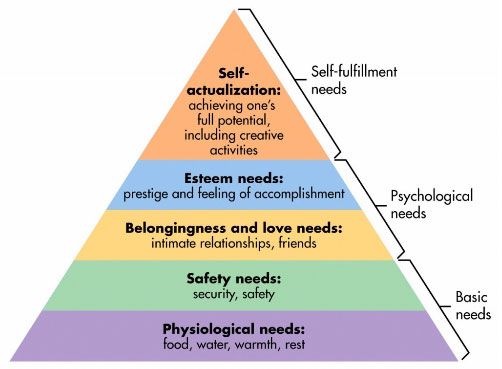 The world changed last week. Some people think it changed for the better; others for the worse. Regardless, change has an impact. The larger and more unexpected the change, the greater the impact will be on your employees’ level of engagement. In this case, engagement has nothing to do with your company or the work they do and everything to do with their feeling safety and belonging.
The world changed last week. Some people think it changed for the better; others for the worse. Regardless, change has an impact. The larger and more unexpected the change, the greater the impact will be on your employees’ level of engagement. In this case, engagement has nothing to do with your company or the work they do and everything to do with their feeling safety and belonging.
For those that welcome the change, they are emboldened by the opportunities that lie ahead because it increased their sense of belonging and accomplishment. It’s a different story for those who didn’t foresee the monumental change that occurred.
Understanding Maslow’s Hierarchy of Needs is a good starting point.
Maslow’s Hierarchy of Needs
“Maslow’s (1943, 1954) hierarchy of needs is a motivational theory in psychology comprising a five tier model of human needs, often depicted as hierarchical levels within a pyramid. 1” “Maslow (1943) stated that people are motivated to achieve certain needs, and that some needs take precedence over others. Our most basic need is for physical survival, and this will be the first thing that motivates our behaviour. Once that level is fulfilled the next level up is what motivates us, and so on. 2”

“This five stage model can be divided into deficiency needs and growth needs. The first four levels are often referred to as deficiency needs and the top level is known as growth or being needs.” As the graphics depicts, deficiency needs are further divided into Basic Needs and Psychological Needs. Basic Needs encompass Level 1: Physiological Needs (food, water, and shelter) and Level 2: Safety Needs (safety and security). Psychological Needs focus on Level 3: Belongingness and Love (relationships and friends) and Level 4: Esteem Needs (accomplishment and recognition).
The Impact of Change
Our goal is to reach self-actualization. Yet, most of us live in the upper levels of the deficiency needs section of the pyramid, i.e. Psychological Needs. As we continually strive to achieve certain needs, i.e., improve on the deficiencies in our lives, we are able to climb up the pyramid. When change occurs, we instinctively evaluate its perceived impact. Given the constancy of change, we make adjustments or compensations and usually remain in this section. Monumental changes, though, often knock us back into the Basic Needs section.
Why? Because monumental change impacts our Basic Needs, i.e., our sense of safety and security. There is more unknown than known and that ambiguity causes us to retreat.
For many, the election results left them feeling scared about what may happen in the future. They now lack the safety and security they desire. As long as they fear for their safety, they cannot move up the pyramid.
Company Impact
Companies, leaders, and managers need to reinforce a sense of safety and security within workplace. They should understand that Basic Needs take precedence over everything else in their employees’ lives. Falling down the pyramid pulls focus away from role responsibilities and lowers productivity. Lowered productivity impacts the company and its stakeholders. In a normal year, “Gallup estimates that actively disengaged employees cost the U.S. $450 billion to $550 billion in lost productivity per year.3” Given the monumental change this election has brought, those costs will only grow.
What are your thoughts on Maslow’s Hierarchy of Needs? What impact has the election had on the productivity of your employees?
1 McLeod, S. A. (2016). Maslow’s Hierarchy of Needs. 2007. Web. 16 Nov. 2016. www.simplypsychology.org/maslow.html
2 Idid.
3 Sorenson, Susan, and Keri Garman. “How to Tackle U.S. Employees’ Stagnating Engagement.” Gallup.com. Gallup, Inc., 11 June 2013. Web. 16 Nov. 2016.
Let’s Engage!
I’m Agent in Engagement Simpson…Gregory F Simpson.
Employee engagement is a critical mission. I hope I can count on your help! Subscribe to the RSS Feed to receive the latest intelligence/insights and/or register to make entries in the comments log.
 You can follow me @agtinengagement.
You can follow me @agtinengagement.
Email me at g…@a…t.com.
Connect via LinkedIn at LinkedIn.com/in/GregoryFSimpson.
Learn more about me at gregoryfsimpson.com.
P.S. First contact? Welcome to the Agent In Engagement community. Explore and join fellow employee engagement operatives in targeting a known thief – alias: Disengagement. Together we can bring this thief to justice and make the world a better place for all companies and their employees.
Other recent Agent in Engagement data/reports by Agent Gregory F Simpson:
- Employee Engagement Intelligence Briefing: 2016.11.07 – 2016.11.11
- Veteran Operative Employee Engagement Insights: 11.07 – 2016.11.11
- Advice on How to Win in the Politics vs. Employee Engagement Campaign
- What Scary Creatures Haunt Your Workplace?
- The 22 Employee Engagement Personas You Need to Adopt
- How to Organize Your Employee Engagement Sources
- 3 Ways to Learn the Latest About Employee Engagement